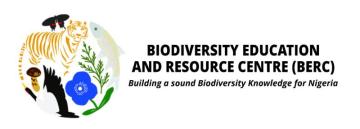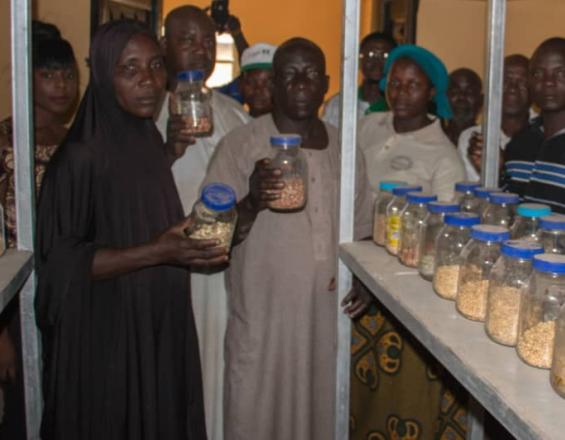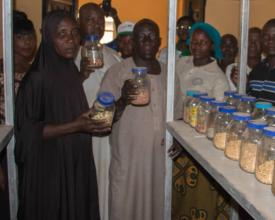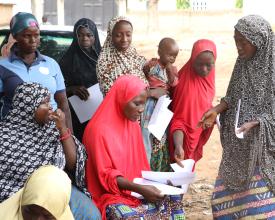
Securing the genetic resource base of Indigenous plants species: A Community Biodiversity Conservation Initiative

We have assisted communities develop home gardens for important wild plants species. Our cost effective seed/gene saving initiative have helped communities conserved, restored, revitalized local crop species and varieties critical for the community's survival.
Context
Challenges addressed
Biodiversity is critical for food security and nutrition. Sadly, human impacts are accelerating loss. Indigenous plants hold the potentials to scale up Food Security/ Nutrition and biodiversity conservation due their potential contribution in preventing malnutrition, obesity and diet-related disorders. Sadly most of them are localized and may even go extinct before they are even discovered, disappearing with them their enormous Indigenous knowledge.
Location
Process
Summary of the process
Our approach connect in a unique way as we were able to connect communities to Indigenous plants conservation. In promoting conservation of indigenous plants, we have offered opportunities for responsible forest management and business development at community level. Thus, armed with these tools, community members could achieve industry specifications/requirements as well as access new markets. In all, we have created a local base healthy ecosystems which greatly facilitated economic growth not only within the Forest Community but beyond the community through trade of products. With decent packaging techniques, locals have seen sales even on the shelves of super malls in urban areas. This has ensured that local biodiversity products are marketable.
Building Blocks
Securing the genetic resource base of Indigenous plants species: A Community Biodiversity Conservation Initiative
We have developed a manual which can help smallholder women farmers replicate the solutions in the South West of Nigeria. At the national level, collaborating with policy makers to include indigenous food plants as key components of in the School feeding programs as well as the Anchor borrowers programme for micro-credits. Our Seed bank Open day programmes provide avenues for exchange and display of seed diversity as well as a model for local seed bank scale up to a national project for the conservation of a larger number of wild crop relatives in Nigeria. We are currently advocating at the National legislature to provide legislative laws on the inclusion of Indigenous food plants to the Nigerian Food policy programme. These initiatives when pulled together will contribute significantly to indigenous Plant Species Conservation.
Enabling factors
With limited access to land, women are still custodians of Biodiversity with Knowledge to bolster food security. 65% of the participating community members were women. 53% ages 40-65, 47% ages 18-39. Women participation was supported by their husbands. This saw more women take decision on dietary requirements for their families and strong participatory roles in management and benefits sharing.
Lesson learned
Households created small/medium-sized enterprises for steady economic growth which put less pressure to their surrounding forest. As a result of less pressure on the forest for livelihood, new revenue streams are up and running. Local base ecosystems have facilitated growth not only within the Forest Community but beyond, creating opportunities for decent work. Achieving social inclusion was to emphasize “local ownership”. Setting up spaces for dialogue that allowed for the active and inclusive participation of local people ensured that priorities were determined locally and that local concerns were at the core of all activities.
Securing the genetic resource base of Indigenous plants species: A Community Biodiversity Conservation Initiative
The project provided alternative sources of propagation, (home gardens for 500 households in 5 villages) increasing diversity around forest community while reducing pressure on the forest for these species. 175 Varieties of 35 crop species were saved in the community seed bank. Seed exchange and multiplication activities influenced the increase in cultivation of new varieties. Seed bank produced and sold over 10 different varieties of local tomatoes, yams and garden eggs. Proceeds was used to set up a Community Biodiversity Management Fund.
Enabling factors
Our project is restoring indigenous plant biodiversity around forest communities in Nigeria where they have been depleted over time due to over-exploitation as well as contributing to preserving traditional plant varieties and wild gene pools for Indigenous people. Our project has provided alternative sources of propagation, increasing diversity around forest communities while reducing pressure on the forest for these species.
Lesson learned
We have shown a link between Good Nutrition which these indigenous plants bring and health of the Environment and Forests around these communities. Irrespective of the effects of the COVID-19 pandemic on our food systems, seed saved in the Community seed bank was able guarantee continuity in the supply and distribution of seeds which represented major boater to creating resilient local food-systems at the community.
Impacts
Biodiversity is critical for food security and nutrition. Indigenous plants hold the potentials to scale up food security/nutrition and biodiversity conservation due their potential contribution in preventing malnutrition, obesity and diet-related disorders. Sadly, most of them are localized and may even go extinct before they are even discovered, disappearing with them their enormous Indigenous knowledge. we are building community resilience taking into account indigenous knowledge which has over time played an important role in shaping their existence. In doing this, communities have coped with the threats to food/nutrition security and biodiversity loss reducing venerability. In maximizing the potential of Indigenous Food Species, we have built community confidence and perception on socio-economic factors in their environment influenced their attitude/behavior. We have shown a link between Good Nutrition which these indigenous plants bring and health of the Environment and Forests around these communities. Irrespective of the effects of the COVID-19 pandemic on our food systems, seed saved in the Community Seed Bank was able guarantee continuity in the supply and distribution of seeds which represented major boater to creating resilient local food-systems at the community.
Beneficiaries
We have developed home gardens for important wild plants species. Our cost effective seed/gene saving initiative have helped communities conserved, restored, revitalized local crop species and varieties critical for the community's survival.
Sustainable Development Goals
Story
As a little boy, I have always been amazed of how Charles Darwin came about his theories. I have realized that his theories were not based on high academic knowledge but the simple fact of his “LOVE for NATURE” complimented by his “NATURAL INSTINCTS” for observation. Growing up, I found that I also had passion for nature conservation and my training as a plant scientist increased my skills for monitoring flora biodiversity. In my quest to be that “Better Naturalist” I picked up interest in communicating biodiversity issues to local people. These where the “Aha” moments leading to my science for community development goals. I want to see my research projects not only have scientific impacts but also rural community development impacts.





